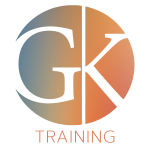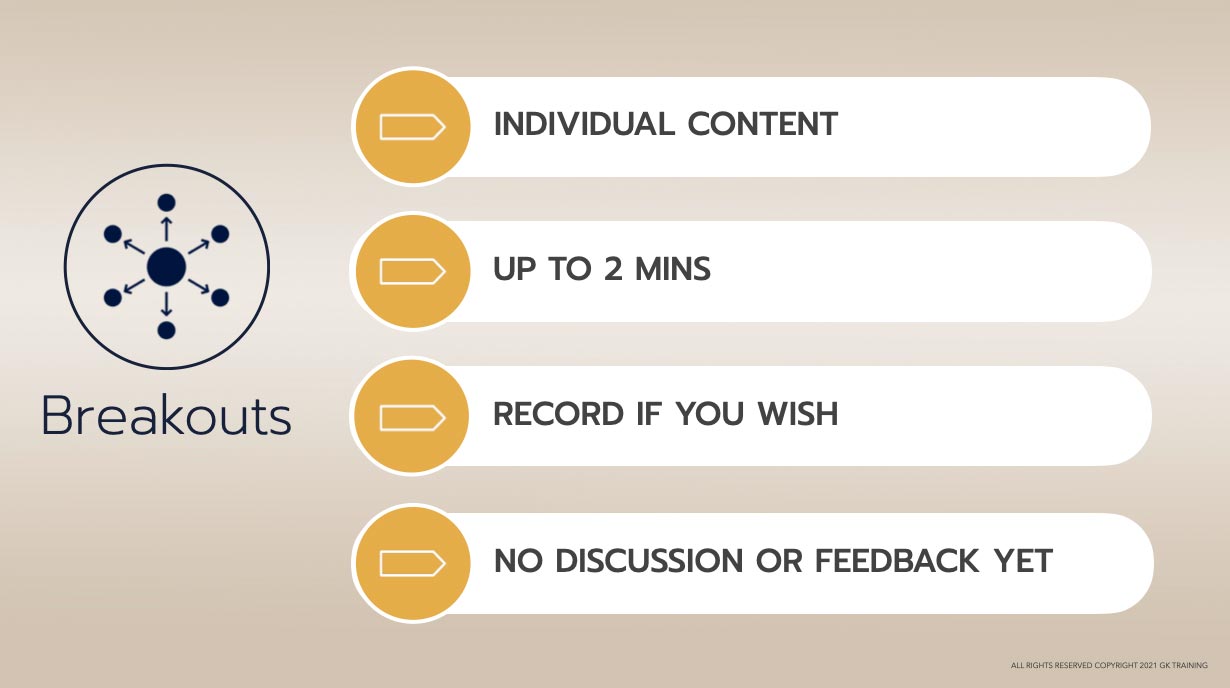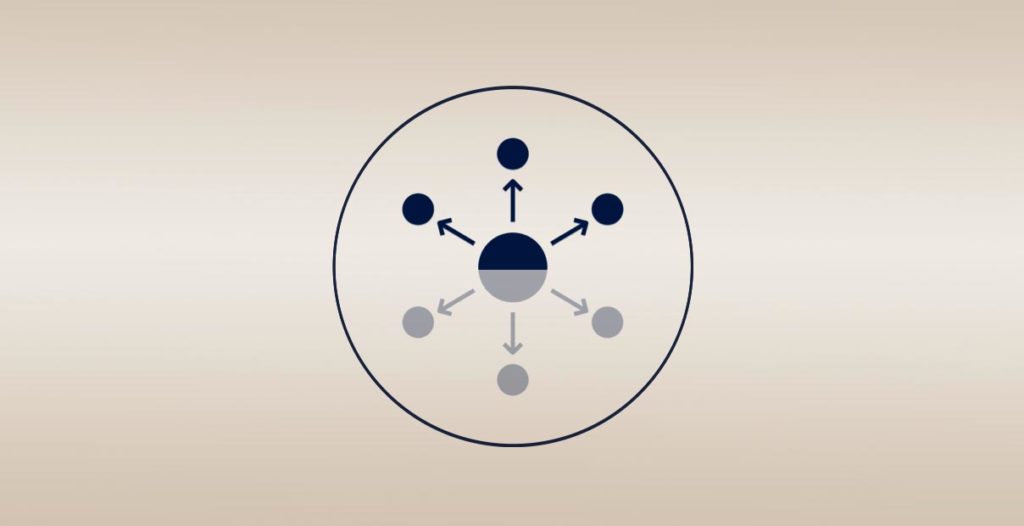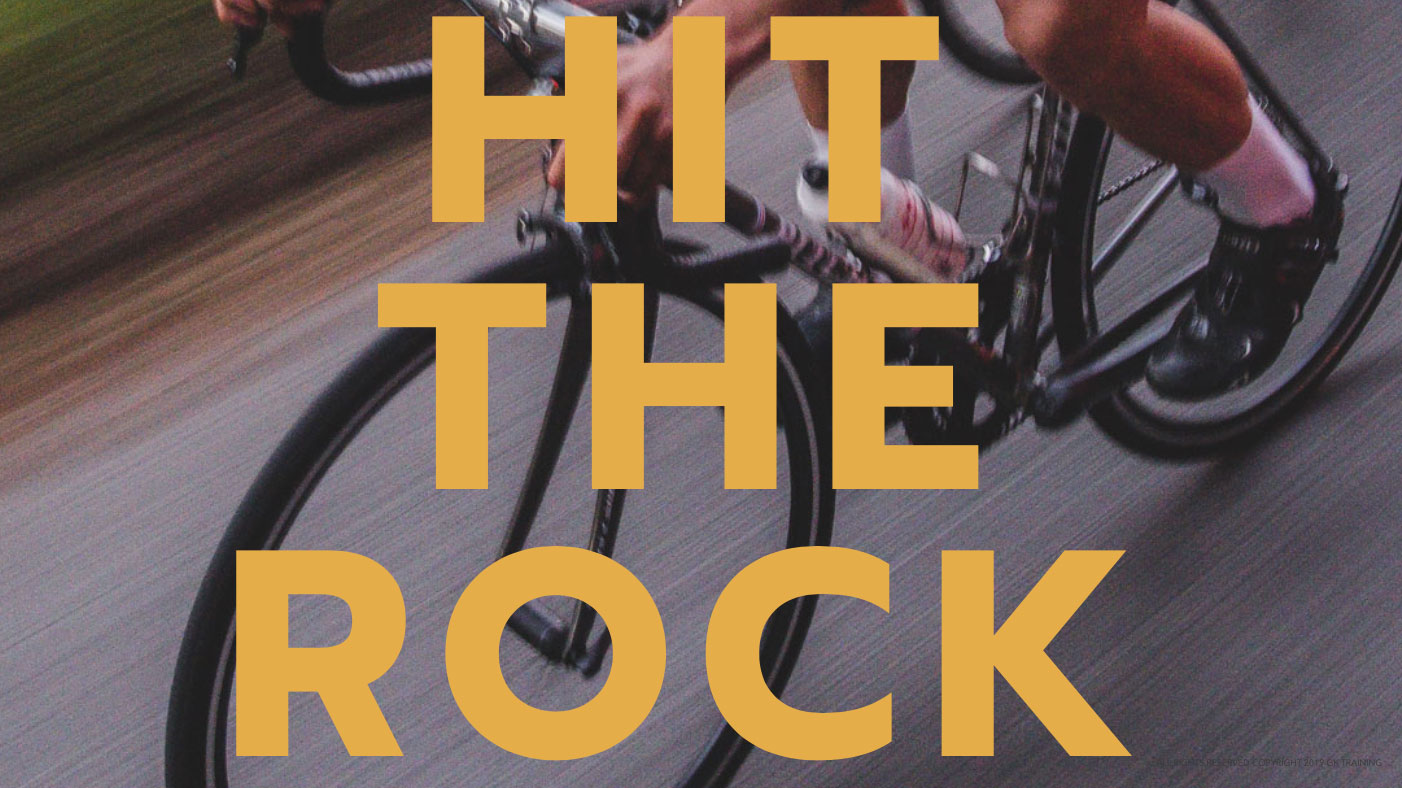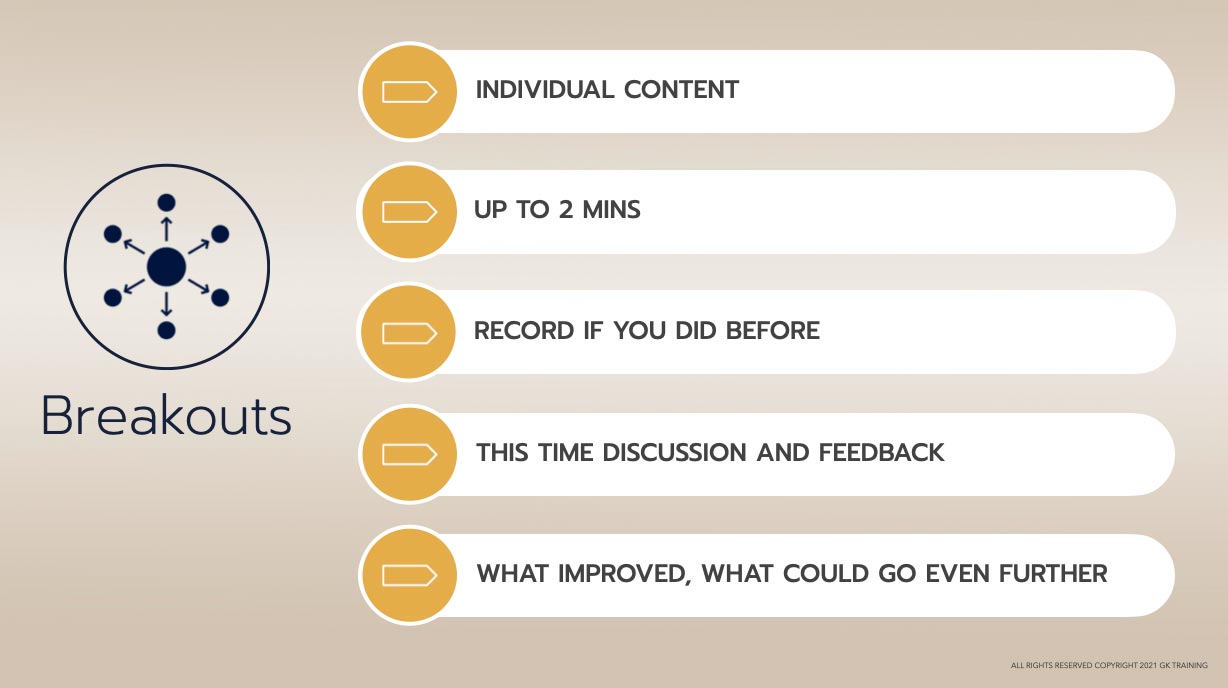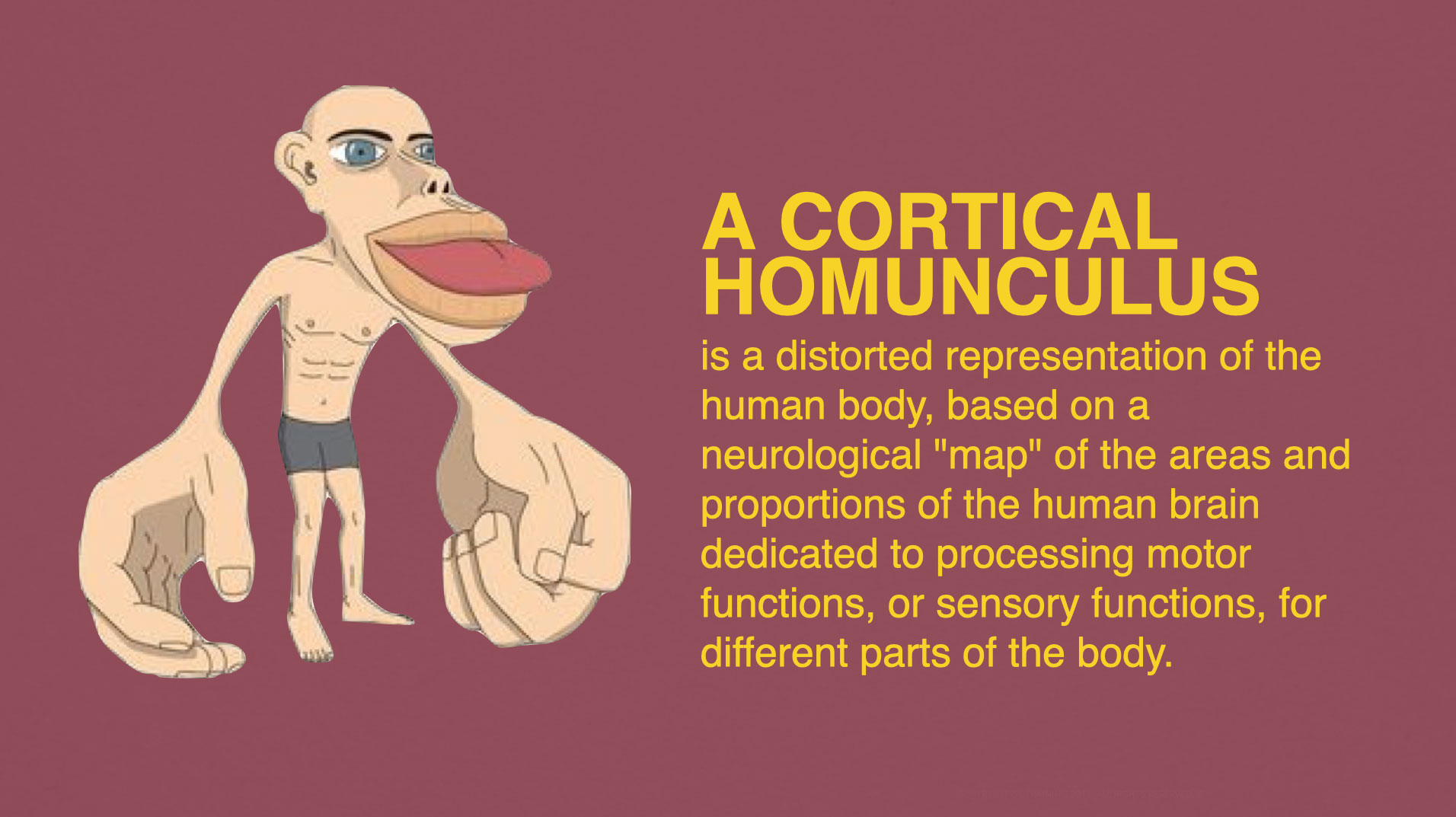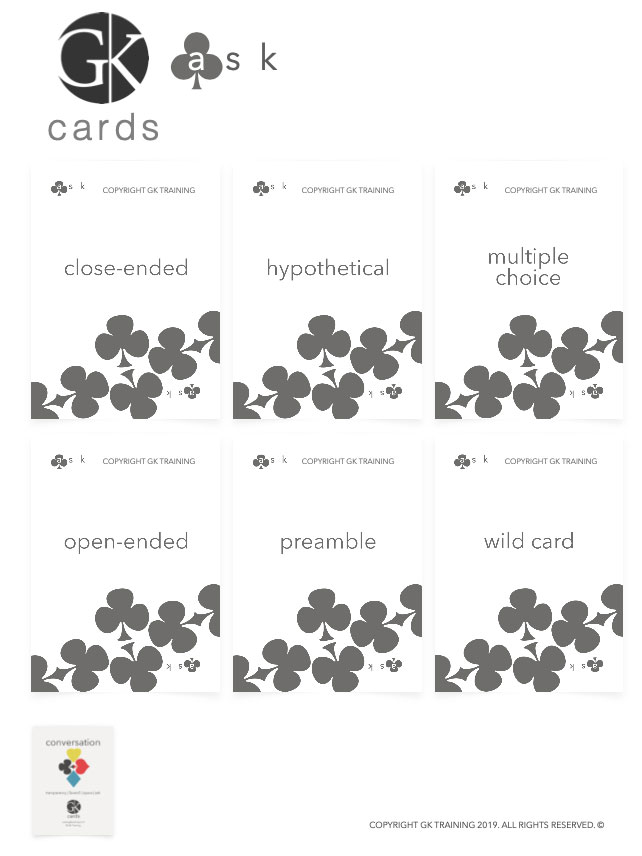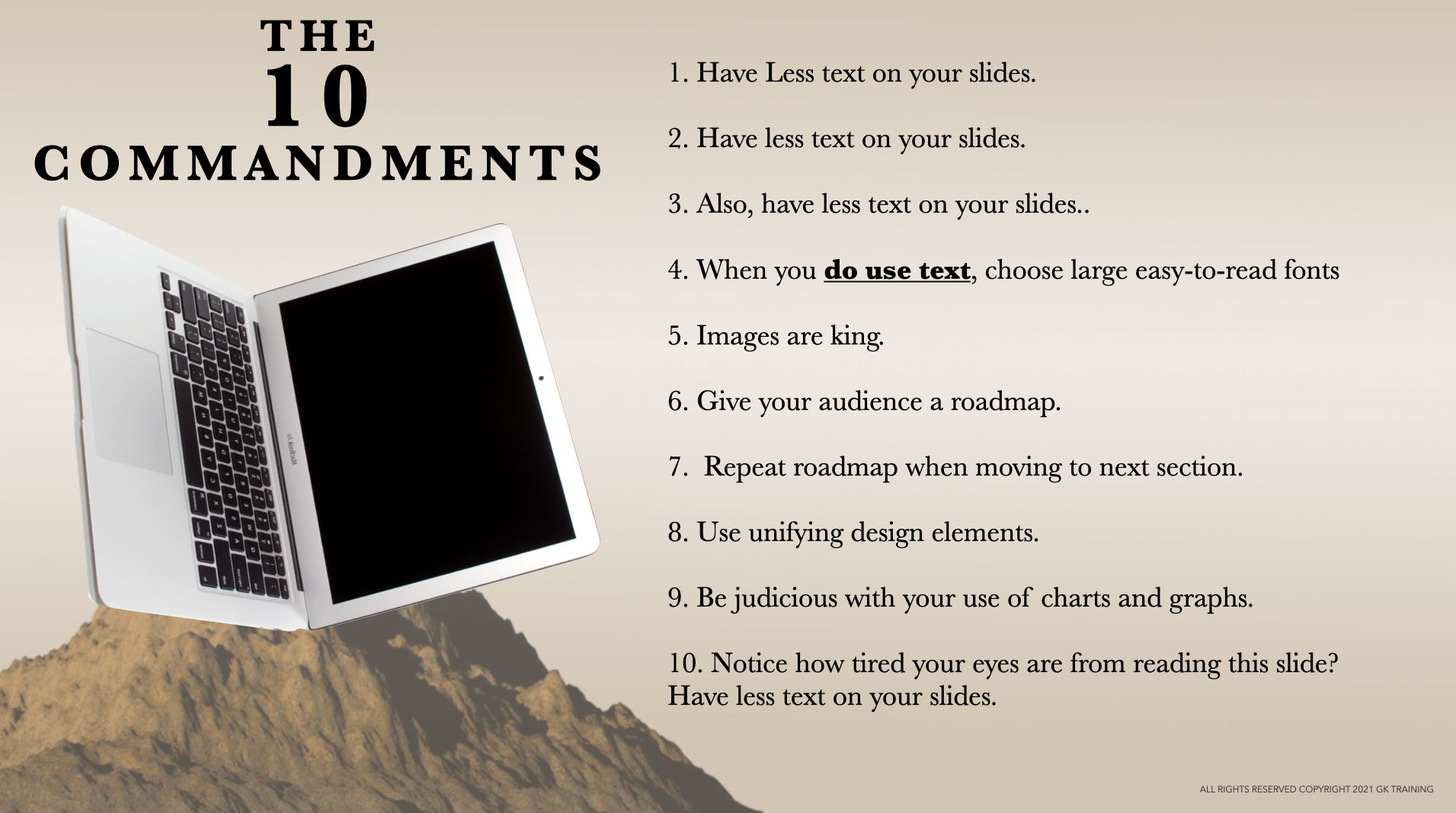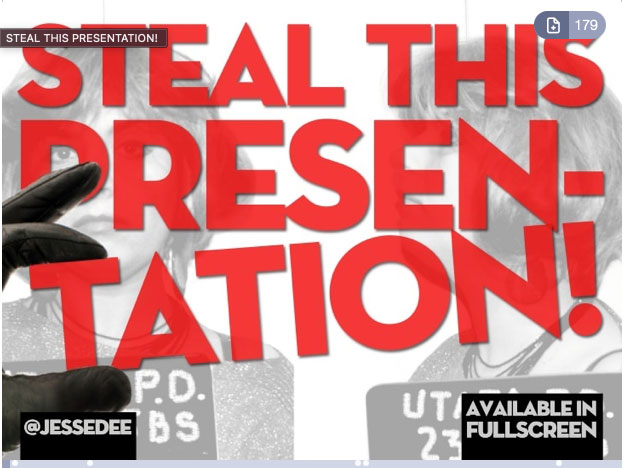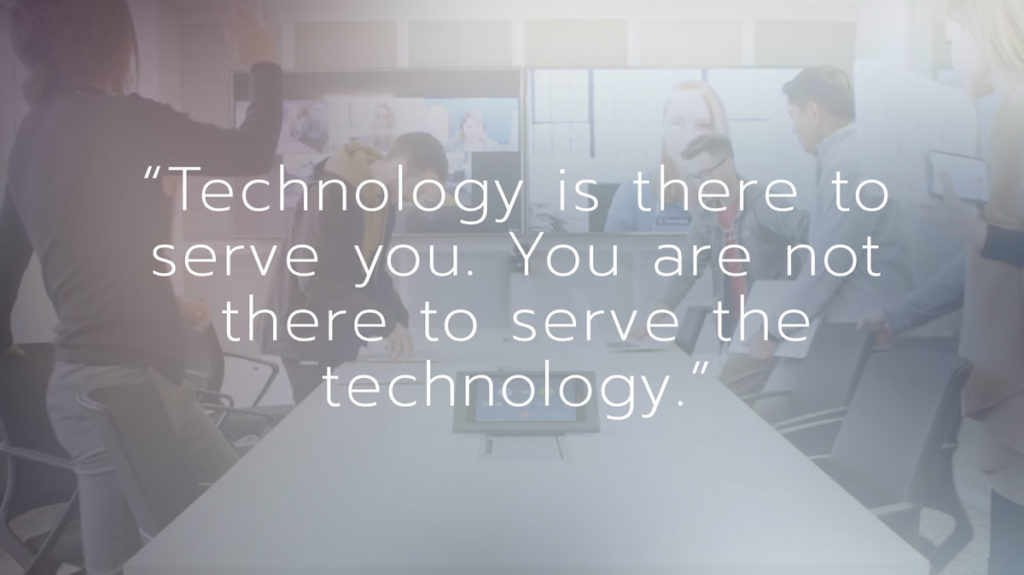
PROGRAM TITLE
PROGRAM SUBTITLE
MORE SUBTITLE IF NEEDED
PROPOSAL

PROPOSAL
PREPARED FOR:
Entity Name
Date
WHO WE ARE
We are a boutique communications training company serving Fortune 1000 companies, universities, and individuals around the world. We provide outstanding soft skills training in communications, to everyone from U.S. Presidential candidates to high school students, and everyone in between.
We have over a decade of experience working with Brown Brothers Harriman. We’ve individually coached hundreds of BBH employees, including Sr. Partners, C-suite execs, and MDs. We’ve designed training and development programs for individuals, small teams, and large groups at BBH, from Boston to Krakow to Dublin to Tokyo.
CASE STUDIES
RUN OF SHOW
The run of show below outlines the customized program GK Training can deliver. It offers helpful tips and deep dives into the subject matter for each component of the session. Along with the same highly actionable curriculum GK is known for, this program will calibrate its tone for this specific audience: not skimping on the subject matter expertise, but also adjusting levels based on participant experience.
Executive Presence Run of Show
90 MINUTE WORKSHOP
WELCOME
WHY: Learners need a clear moment of embarkment, and a roadmap to know where they’re going and why.
ACTIVITY: The session begins with a moment of surprise and story-telling to engage. We set expectations and cover the agenda so participants feel comfortably in the hands of a trustworthy narrator and challenged by the session’s ambition. We emphasize how the day will equip the learners with new skills that are highly relevant at this beginning stage of their career, and explicitly give them permission to get feedback and support from those around them as they navigate their new legal home at Latham & Watkins.
VIRTUOUS CYCLE OF GOOD COMMUNICATION
WHY: Both what you say and how you say it are important, and they’re connected — in ways that are obvious…and not so obvious.
HOW: We consider the relationship between Content and Delivery. While communication training typically examines (and even debates) the ratio of which matters more, we focus on how to unlock a virtuous cycle in which better delivery actually unlocks better content.
CONTEXT:
See how our training helped Kenji use the Virtuous cycle to Eliminate “ums” and “urs”
LEARN MORE:
Watch a quick primer on the definition of the Vicious and Virtuous Cycles of Communication.
BREAKOUT 1
SELF-LED (Baseline)
HOW: Learners establish a baseline by presenting to their colleagues in breakout groups of six or less.
ACTIVITY: Each participant has opportunity to deliver the pre-work; each participant gets equal time. (Note: for the first breakout there is no peer feedback.)
THREE SURPRISES
HOW: Participants learn GK’s 3 suprises about good communication: 1. it comes from using more of yourself, not less; 2. it comes from being focused on the other person; 3. you do not need to feel confident to project confidence.
ACTIVITY: Participants consider the bandwidth with which kids communicate; they complete a thought experiment about 4 one-to-one communication scenarios and embed the key realization with a mneumonic exercise; and they lay the groundwork for liberating themselves from the “confidence trap,” via volunteer or call-and-response (if live), or chat feed (if remote).
CONTEXT:
Learn more about the confidence trap and the twin hazards of thought suppression and distinction in our 10-year anniversary message.
LEARN MORE:
THINKING, FEELING, AND DOING
WHY: Not all activities are created equal. Speakers often obsess over negative thoughts and insecure feelings, at the expense of actionable “Doings.”
LEARN MORE:
If you have a moment, watch his TED talk on how to speak up when you feel like you can’t!
WARM-UP
WHY: Communication is a physical art; preparing and priming your physical and vocal communication instrument is as essential to a speaker as a shoot-around is to a basketball player or an arpeggio is to a musician.
ACTIVITY: Participants complete a group warm up exercise, including customized tongue twisters. Participants receive access to GK’s warm-up video library as well as info for GK’s live weekday public warm-up.
LEARN MORE:
GK premieres a new five-minute warm-up every weekday morning on our YouTube channel. Take a look here.
TRANSPARENCY
HOW: Participants learn the GK Training 3 F’s of Transparency methodology: Fake it, Feature it, and Fix it.
ACTIVITY: After learning the alliterative 3 F’s framework, participants craft a “Transparency Phrase” they can use to navigate challenges and mistakes.
CONTEXT:
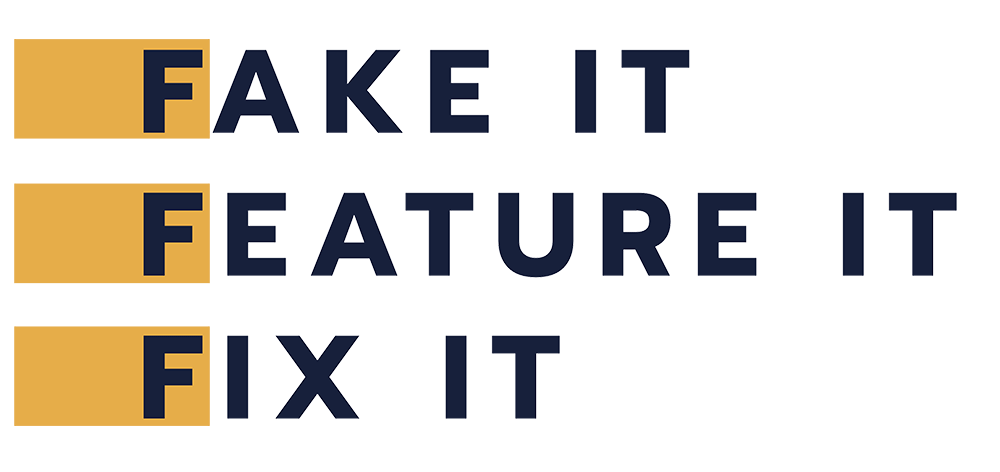
Watch a 90 second explainer.
3 F's In Action
LEARN MORE:
Want to know the philosophy behind Transparency? Watch this 2 minute explainer.
VOCAL VARIETY
WHY: Vocal variety — the musicality in the human voice — indicates both meaning (please pass the red pen) and intent (please pass the red pen!!!). It need not be learned de novo, but rather constraints must be unlearned, as humans have used the musicality of sound to communicate ideas since time immemorial.
HOW: Participants learn the importance and origin of vocal variety, and understand it using the GK Training 5 P rhubric to evaluate it along the following alliterative dynamics: Pace, Pitch, Pause, Power, & Placement.
ACTIVITY: Participants map each of the P’s to the effect on an audience, as outlined in research (conducted by GK Founder Michael Hoeppner and colleagues at Columbia Business School, UCLA, Univ of Chicago, et al) on the impact of the 5 P’s on political audiences.
LEARN MORE:
What can you learn about Vocal Variety by reading to kids?
KINESTHETIC LEARNING
WHY: To achieve actual behavioral change, participants need to learn not just with their brains but with their bodies. We use kinesthetic learning and embodied cognition to build new habits that stick.
HOW: Participants learn what Kinesthetic Learning and Embodied Cognition are and why they’re important for new skill development. Participants get introduced to multiple GK proprietary kinesthetic drills for changing bad habits.
ACTIVITY: Participants learn multiple drills that address derailers like: talking too fast, monotone communication, discomfort with silence, verbosity, and filler language. Here is a sampling of drills that you can expect at your workshop.
LEARN MORE:
Watch this Keynote from Michael Chad Hoeppner (Pay attention: A cork makes a cameo).
BREAKOUT 2
SELF-LED
HOW: Learners practice the program’s lessons in breakout groups.
HOMEWORK AND
NEXT STEPS
ACTIVITY: The session wraps up with a preview of the reinforcement emails each participant will receive, an introduction to GK’s interactive practice app Question Roulette (custom version), and guidance on HW. Learners are explicitly encouraged to seek out feedback from stakeholders at Latham & Watkins moving forward.
CONTEXT:
Here’s a demo of the GK Practice App “Question Roulette”
OVERCOMING
OBJECTIONS
HOW: Participants learn the 4 stages of the GK Training Overcoming Objections framework.
ACTIVITY: Instructor teaches the GK Training methodology for overcoming objections: Acknowledge, Empathize, Ask permission, Address. Learners: identify how to remove oppositional language (but, although, however), and practice model in pairs, trios, or large-group volunteers using real-world objections.
CONTEXT:
Here’s a video from our Online Learning Program about Overcoming Objections
OVERCOMING
OBJECTIONS
HOW: Participants learn the 4 stages of the GK Training Overcoming Objections framework.
ACTIVITY: Instructor teaches the GK Training methodology for overcoming objections: Acknowledge, Empathize, Ask permission, Address. Learners: identify how to remove oppositional language (but, although, however), and practice model in pairs, trios, or large-group volunteers using real-world objections. Participants practice a physical mnemonic activity Objection Aikido, to internalize the stages; and access to custom QR
CONTEXT:
Here’s a video from our Online Learning Program about Overcoming Objections
ENGAGING
THE SENSES
ACTIVITY: Instructor: Defines Sensory Engagement in the context of facilitation, and shows why it matters; 2. Illustrates examples of learning techniques that activate different senses; 3 Shares classic sensory involvement exercises as a jumping-off point for broader discussion.
CONTEXT:
Check this out: this slightly grotesque looking figure is a rendering of what the human body would look like if density of nerve endings were represented by physical size. Notice how big the hands are? And the lips and tongue? Translation: humans get a lot of information from the world besides just what they take in through their eyes and ears. So if you’re teaching a class and all you’re doing is talking at an audience while you show them slides, there’s a fairly good chance your audience is one thing: bored.
LEARN MORE:
Want to see the most innovative way we found to stimulate learner’s senses? We activated our online learners’ sense of touch in our posture lesson in EP 1.0 by challenging them to staple a post-it note into the shirt collar as a sensory reminder to be as tall as they are. Click here to watch (and maybe to embrace the challenge yourself!)
QUESTION AWARENESS
AND AGILITY
HOW: Participants learn 5 essential types of questions — open-ended, close-ended, multiple choice, preamble, hypothetical — and how to use them effectively.
ACTIVITY: Instructor teaches GK Training’s Five types of effective questions and highlights their definitions, purpose, and common mistakes such as: asking in negative, failing to pause, asking multiple consecutive questions and more. Participants practice, using provided or self-created questions.
CONTEXT:
QUESTION AWARENESS
AND AGILITY
HOW: Participants learn 5 essential types of questions — open-ended, close-ended, multiple choice, preamble, hypothetical — and how to use them effectively.
ACTIVITY: Instructor teaches GK Training’s Five types of effective questions and highlights their definitions, purpose, and common mistakes such as: asking in negative, failing to pause, asking multiple consecutive questions and more; Participants practice, using provided or self-created questions.how to ask questions with linguistics precision, free of non-fluencies; specific kinesthetic tool to tolerate relaxed silence at end of questions. Fostering group participation: – how to cold call deliberatly to increase or decrease intensity in session; how to set parameters for questions to create sense of comfort and safety; how to narrow the field of potential responses to; how to use time indicators, sub-groupings, or subject areas to tier responses and foster participation from other voices, including those less likely to typically participate or those voices who have historically been overlooked; how to request audience responses in multiple ways to create variety in flow, ie: a gestural indication (“thumbs up”, or “show of hands”), unison call outs for fill-in-the blank or either/or, more.
CONTEXT:
BREATHING TIME
TECHNIQUES
CONTEXT:
Here’s a video lesson from our Remote Training Course detailing how to use the GK Cards for BTT.
CREATING VISUALS
ACTIVITY: Instructor leads group through examination of: text overload (how much is too much? how small is too small?), visual element cohesion, repetition of agenda slide and more.
CREATING VISUALS
PRESENTING FROM VISUALS
CONTEXT:
Check out this lesson on Traffic Copping to get a better idea o how it works. NOTE THIS VIDEO NEEDS TO BE FOUND.
PRESENTING FROM VISUALS
CONTEXT:
Check out this lesson on Traffic Copping to get a better idea o how it works. NOTE THIS VIDEO NEEDS TO BE FOUND.
WHY
US
In a successful RFP process, clients rightfully should explore multiple options. At GK we believe our success.
We help transform entire organizations
or transform a single individual's skills.
From:
Date:
Subject:
To: “michael@gktraining.com” <michael@gktraining.com>
Dear Michael:
Please see the press release below. You were instrumental in me making partner and I’m deeply grateful to you and your team for your help.
The one thing that was keeping me from this promotion was a (perceived or real) need to improve my oral advocacy skills. And what got me over that was my performance at the two hearings I had in October and December of last year, on which we worked together. In fact, the day after I returned from the December hearing, the two senior partners that had been critical of my oral advocacy skills called me to tell me that I should get promoted to partner this year. I could not have excelled at those hearings without you and your team, and the work that we did together. And without excelling at those hearings I wouldn’t have been promoted. So I’m not exaggerating one bit when I say that you were instrumental. Thank you so much!!
Take care and happy holidays!
We work with Fortune 500
companies across industries
as well as universities, start-ups and nonprofits.
Regardless of role or experience, GK Training helps people hone their
communication skills in pursuit of their professional and personal goals.
3 OF THE TOP 8
GLOBAL FINANCIAL FIRMS
2
PRESIDENTIAL CANDIDATES
45 OF THE AM LAW 100
2 OF THE 4
MAJOR US PROFESSIONAL SPORTS LEAGUES
1 OF THE TOP 5
GLOBAL FOOD & BEVERAGE COMPANIES
4 OF THE TOP 25
GLOBAL PHARMACEUTICAL COMPANIES

Our methodology, our approach.
Our curriculum is built on
artistic pedagogy
We customize every program.
GK prides itself on delivering powerful tools that are customized for each audience. That can be as outside the box as this program we designed for an innovative tech company in their company gym:

We leverage innovative tech
Machine learning and speech recognition software customized for your company.
Our practice app, Question Roulette, can give clients a scaleable resource for consequence-free practice. The app allows users to improve at answering tough questions or objections. When playing, participants get prompted with a question, or can play “Roulette” or “Rapid Fire.” They are immediately provided with metrics (how long did they speak? how fast? how much filler language?), and each metric is linked to a GK drill for skill development. GK can customize the app entirely for clients, too, so not only can users practice answering generic questions they can practice an industry specific question or objection as well as tracking metrics down to the words used in a response. It’s that powerful.
Experience communication training
in virtual reality.

Our VR app is designed to offer clients a consequence- and judgement-free place to practice their skills. The participant gets immersed in a training world where they can focus on their areas of weakness, with the full sensory stimuli of a virtual reality environment.
Take a tour HERE of some of the experiences available via this custom VR app.
GK Online Learning
An innovative learning platform developed for individuals and organizations.
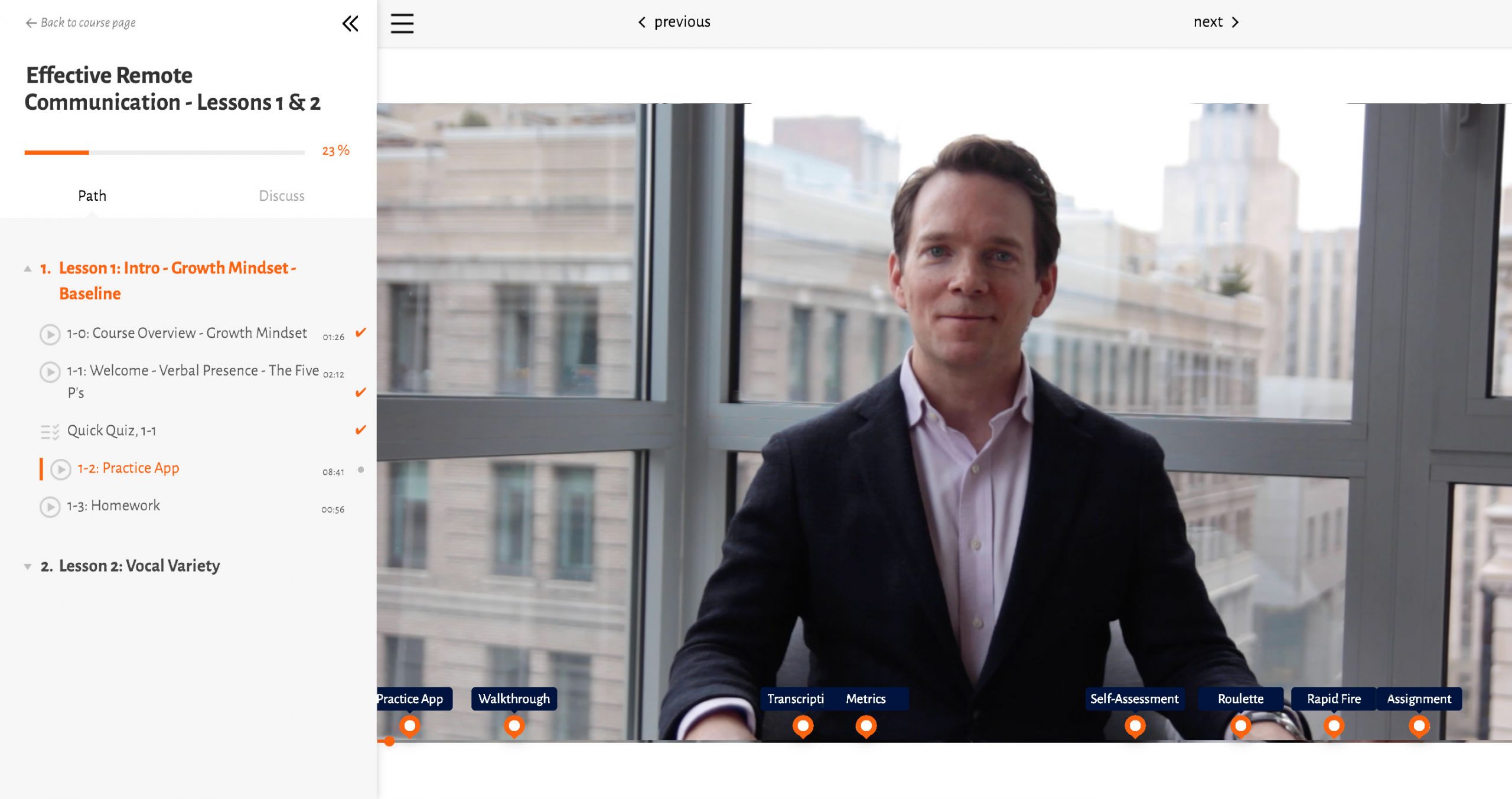
GK offers clients an asynchronous, self-paced online learning platform featuring comprehensive, multi-lesson courses full of concrete, actionable tools to improve your communication. Courses includes our practice app and a suite of kinesthetic tools developed over a decade of coaching executives, attorneys, salespeople, political candidates, and graduate students.
Click here to see the current suite of course offerings.
